
Viabizzuno Founder Mario Nanni on the Beauty of Light and How to Be a Real Gentleman
Founded in 1994, the Italian light designer brand Viabizzuno is nowadays one of the most prestigious brands in the lighting industry. The Founder Mario Nanni found his interest in light since he was young. With his strong sense of space and design, later he started dedicating to the lighting industry, redefine the meaning of light with his vision in the hope of discussing the relationship between architecture, space and people through the light, making the clients feel the emotions delivered through his work.
The minimalist design of Viabizzuno focuses on the functionality without sacrificing the aesthetics, nowadays people could see his work in many upscale hotels and luxury boutiques.
https://www.instagram.com/p/B0399bshz0w/?utm_source=ig_embed
This time, we have the great honor to meet Mr. Nanni in person in Shanghai, to talk about his enlightenment to the light, the inspirations of the previous design projects and how to become a real gentleman like him?
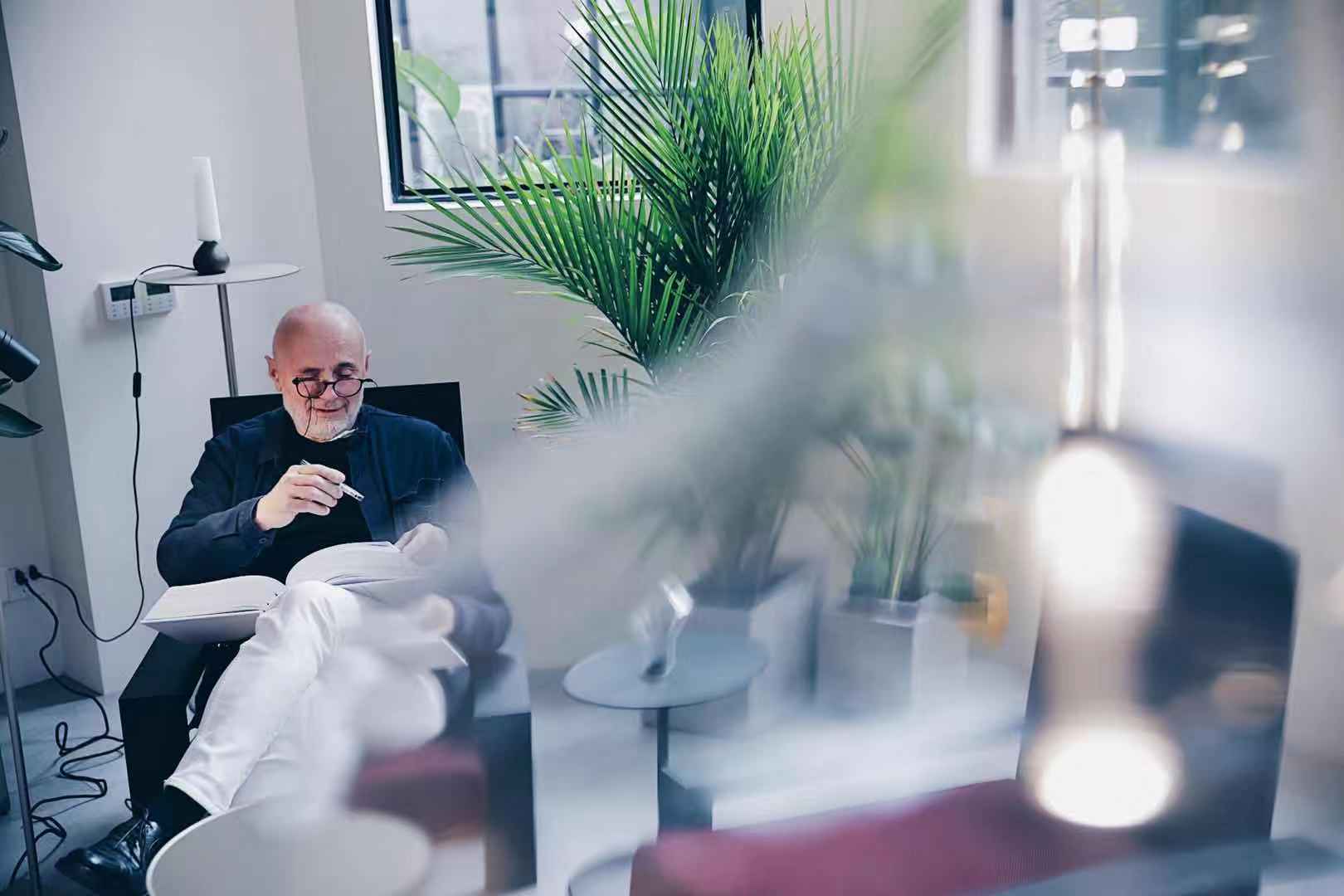
Interviewed by Heaven Raven
Mario Nanni
Heaven Raven (HR):First of all, thank you for your time, it’s my great honor to interview you. You’ve mentioned that your grandfather took you to the cinema, and that experience inspired you to become a light designer, right?
Mario Nanni:”The experience that my grandfather brought me to the cinema, the images I saw by that time as a young child definitely inspired me a lot about lighting.”
“It was very fascinating how the images of the movie switch on and off the light of the room and the different density of the light. So whenever you enter the room, you could always sense different emotion, maybe you would feel a bit scared of the dark, because you wouldn’t know what is in there. And suddenly there’s more light, and you feel relaxed. The emotions were the first impression for me.”
“Funny story, once I brought this girl to the cinema. I wanted to give her a kiss. I was waiting for the moment when the room is dark, the rest is the nervous emotion and the dim light. The braveness you need to have at the moment related to the light and the darkness. It’s a very strong memory for me.”
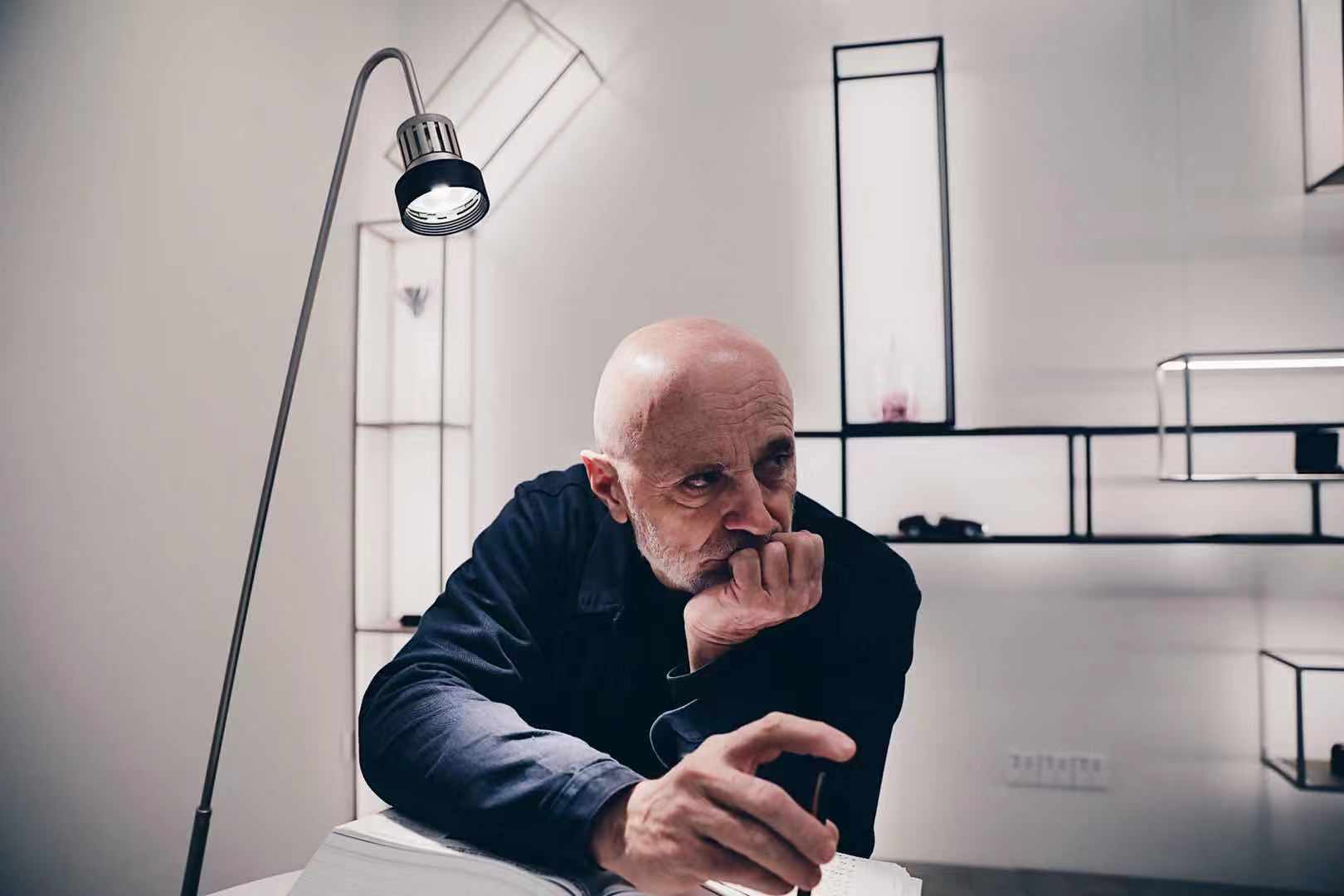
HR:So did you eventually kiss the girl?
“Of course! That’s exactly when I learned how to be a brave man.”
HR:Since you were little, how did you build your sense of beauty for light?
“It’s not something that happened all of sudden. Of course, it’s a process built of day by day, step by step, project after project, I worked with the architects, we tried to understand what they want and to satisfy them, to reach their expectations, their need for lighting.”
“It’s a learning process, find the taste a develop it to your own sense of beauty for lighting.”
“So naturally, working with architects has been always a challenge for me to study more and develop more, to become better and better to reach their expectations.”
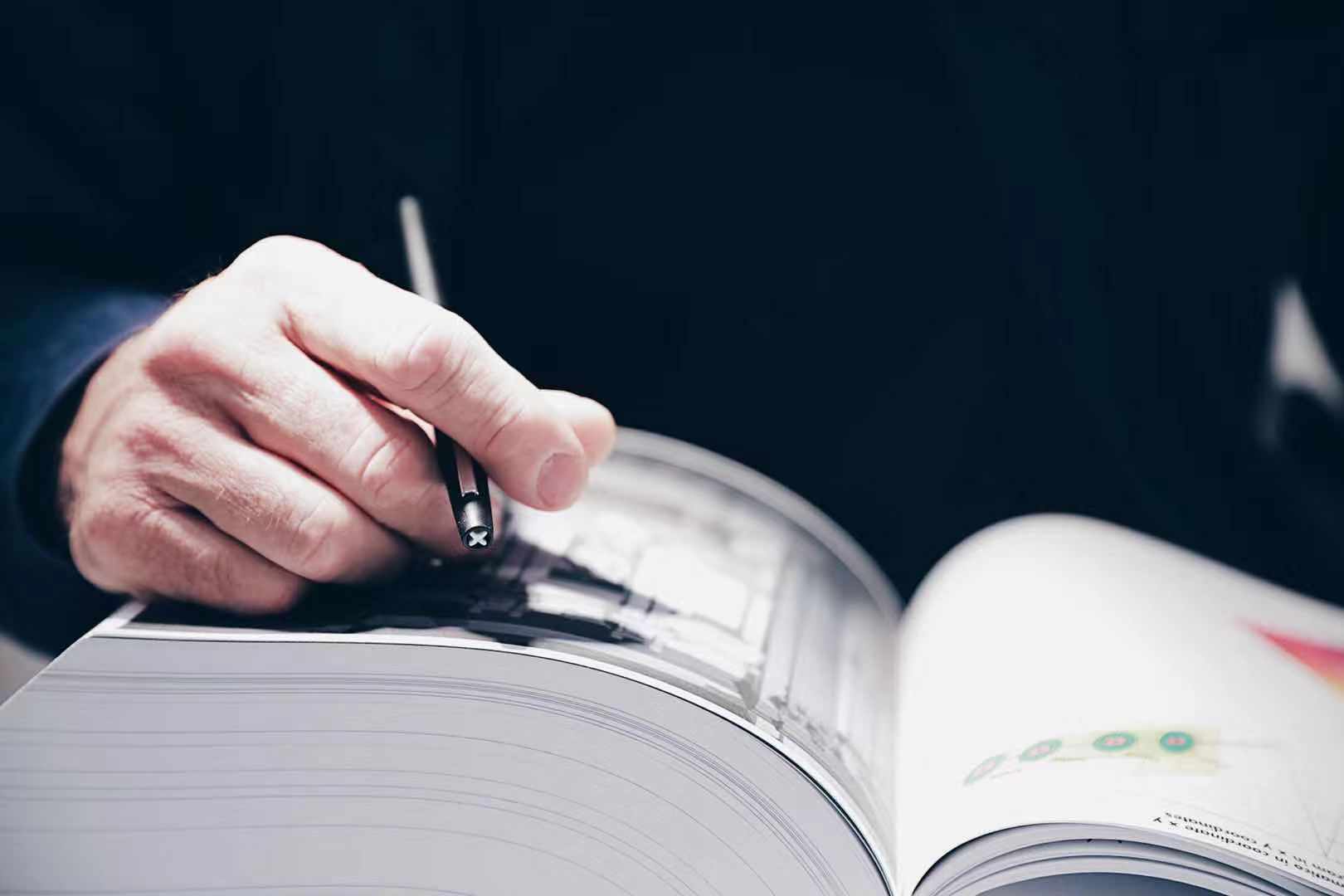
HR:So when you work in the restaurant or the house of a friend, the first thing you notice would be the lighting in the space?
“Absolutely yes, not just myself, but all the people surround me, it’s like a disease.”
“But after having so much experience in my life, now I look at not just lighting, but the images of lighting, the lighting in the space, the relationship between light and architecture, furniture, etc. Overall, the emotion by the space through the light, but not just the light itself but as a whole.”
HR:You have 8 rules of light, among which, why did you say “the light as a building material”?
“The 8 rules work together and combine to create the light atmosphere in the space, so it’s not just one and the other, altogether they work with them to the light, and the light would be infinite.”
“These rules of light have been the materials truly important in our design. Only when the light can be fully integrated into the project, in construction. Using the light as a part of the construction material, and let it integrate into the building, it’s where the light can bring strong value to the project, which is why they need me to involve as long as possible, to bring design mindset into the project.”
“The light is not just something you could switch on and off, it truly affects the construction of architecture.”
https://www.instagram.com/p/B3Z7gbiIXqU/?utm_source=ig_embed
HR:Do your inspirations come from anywhere?
“Yes, it can be anything, even from your bag. From nature, the observation. I tried to keep my mind totally clean, pure to work in design.”
HR:May I ask how old are you? You look so healthy and energetic? Do you exercise every day?
“I am currently between 64 to 65. Basically, I always try to have fun. No matter it’s work or life, find the fun and enjoy it. I always work for my own pleasure.”
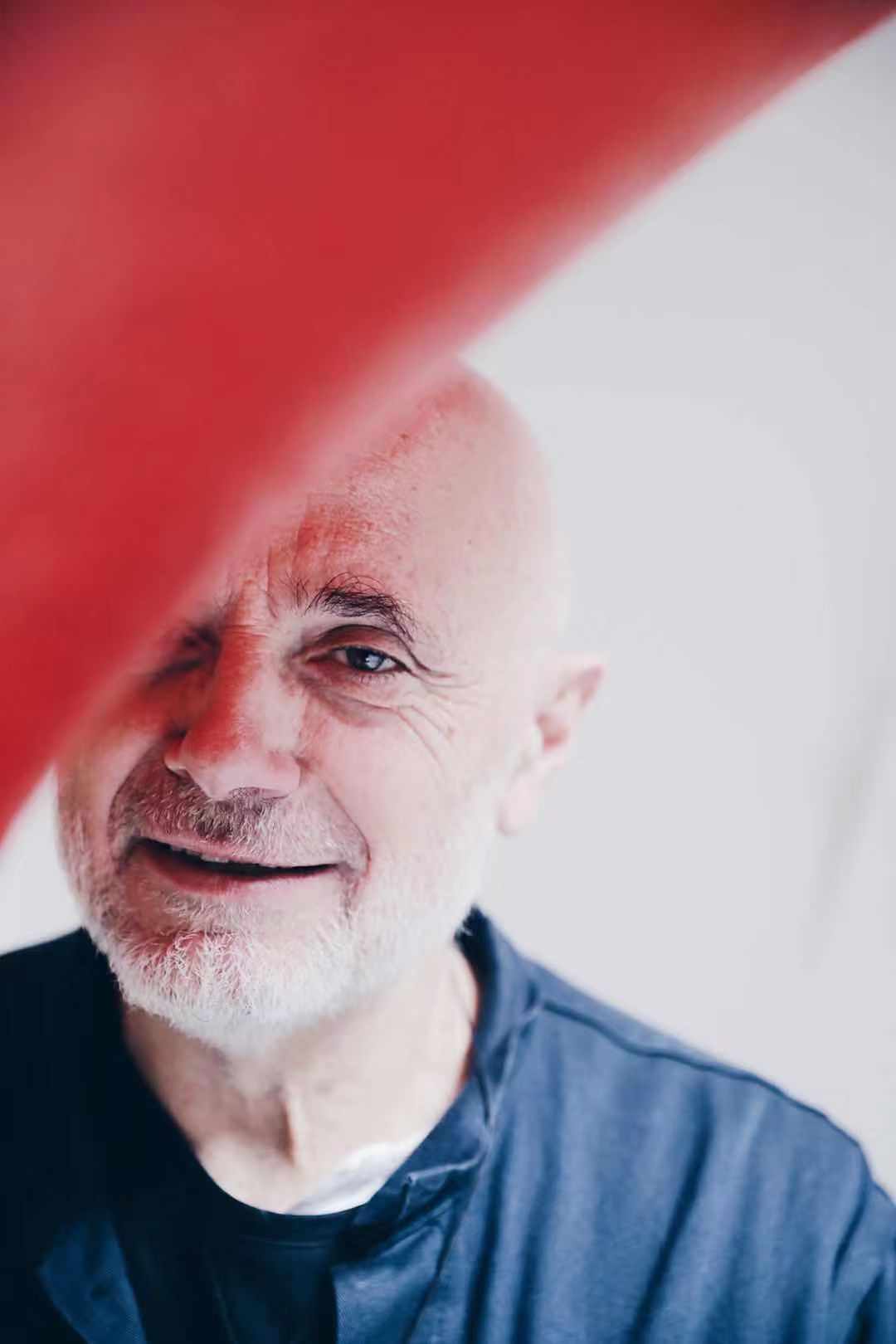
HR:Lifes are very different in Asia and in Europe, what is your observation on the way we use light? Also, how do you think about the market in Asia?
“From my experience, there is a very strong culture of light in Japan, they use shadow in the design of light and darkness; In China, probably in the past, they would use light in a leading way, but now the new generation of the architect is back, so they’re bringing the innovation and importance to light, also they care more about the different kinds of living in their home, more comfort to the light, the coziness as well. ”
“This time I’ve stayed in Shanghai for a week, seeing these new generation architects and the Chinese design make me grow a bit more, also become more sensitive in the related topics.”
“I have confidence and also think that the Chinese market is ready, they’ve prepared enough to accept and to raise their standard of the quality of light, not just quality of products.”
https://www.instagram.com/p/B5vVlQZheY8/?utm_source=ig_embed
HR:You once worked with a church before, could you tell us more about the story behind the collaboration?
“Working with Michelangelo’s Medici Chapel in Florence has been an extraordinary experience, in particular in the study of the concept of the light theory which Michelangelo was ready to use at that time. In order to understand how to deliver the light with high quality, I did research on some artwork, especially in oil painting. “
“One challenge for us always is to explain and let the architects understand that Viabizzuno is not just a company that does technical support in the lighting calculation, but actually, to solve the problem and provide solution whether in design aspect or technical aspect as well as in developing aspect.”
“Our way of working is exactly this need on the project, and to understand how we can develop de new solution to solve problems and become the solution serving for our future collection, that they could be useful for other designers and architects.”
“It would be nice to make some episodes of short videos, and in each of them to explain one by one the use of light.”
(In the video, you could see the lighting installation by Mario Nanni, the sunrise and the sunset created the movement of the light in the church)
HR:You’ve worked with Kengo Kuma before, can you share this special experience and something interesting?
“One of the interesting stories is that when we work directly with him, Kuma san described me as the most Japanese Italian he has ever met.”
“In this Japanese Zen philosophy use of shadows and darkness, it’s also something I’m developing in my career, not just for Japanese architecture but also for light design. This is what I learned from the Japanese designers I’ve worked with.”
HR:Is this your first time in China?
“No, actually, back in the time when I visited China for the very first time, it was at the end of the ’80s, I wanted to travel to Kong kong first because I wanted to see the building of HSBC bank which is designed by Norman Foster. I was very curious about its use of light and mechanism, how they control the natural lighting. And then I went to Guangdong for an affair, it’s really cool to see an affair at that time. It was a very good memory.”
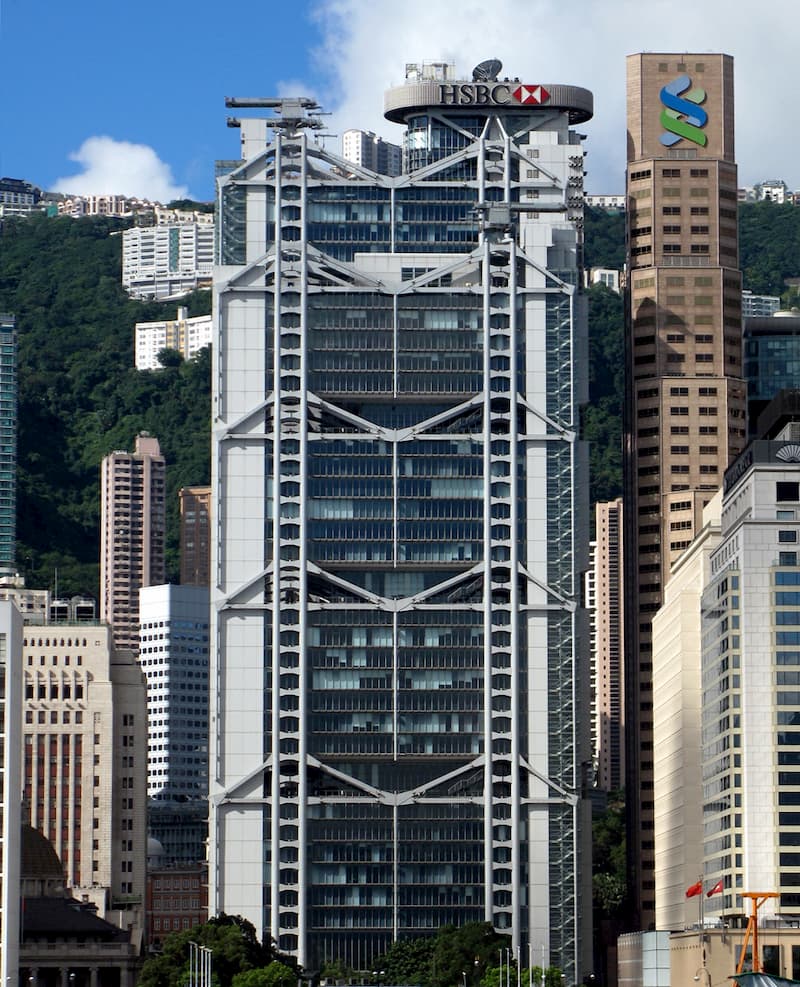
HSBC Main Building in Hong Kong
HR:Fendi’s Roma headquarters light show “poem of light” was really amazing, could you share the story behind this collaboration?
”This project was commissioned to me by the CEO of Fendi at that time, Pietro Beccari. Since we only had 20 days to develop the project. Time was extremely tight. The show lasted only about 24 minutes, we tried to tell a story of the value and craftsmanship behind the brand.“
HR:And Gucci, Prada, Valentino have also been your working partners. Is something special for you to work with these fashion labels?
“For me, working with these brands is really great opportunity to do research and have a deeper understanding of what kind of solution we could offer to them because every brand is different. No matter it’s concept, design or product, so they need a different kind of design and solution. For me, it’s an opportunity to study more, always develop with a strong challenge for each brand.”
HR:People said Italian man is the most gentleman in the world, could you share some tips about being such a gentleman like you?
“Advises from me, the most important attitude would be being a good listener, be able to listen to people and the place. Be aware of your environment.”
“Also, try to slow down a bit, think more. Don’t always rush for money and success. Be aware of what you’re doing, and money will come as a consequence. It’s also my philosophy.”
“Apart from being a good listener, I think it is also important to be revolutionary, in the sense of thinking your own way, not just look at what other people are doing.
“Have your own thoughts and the way of thinking, constantly challenge yourself, and always asking ‘Why not?'”
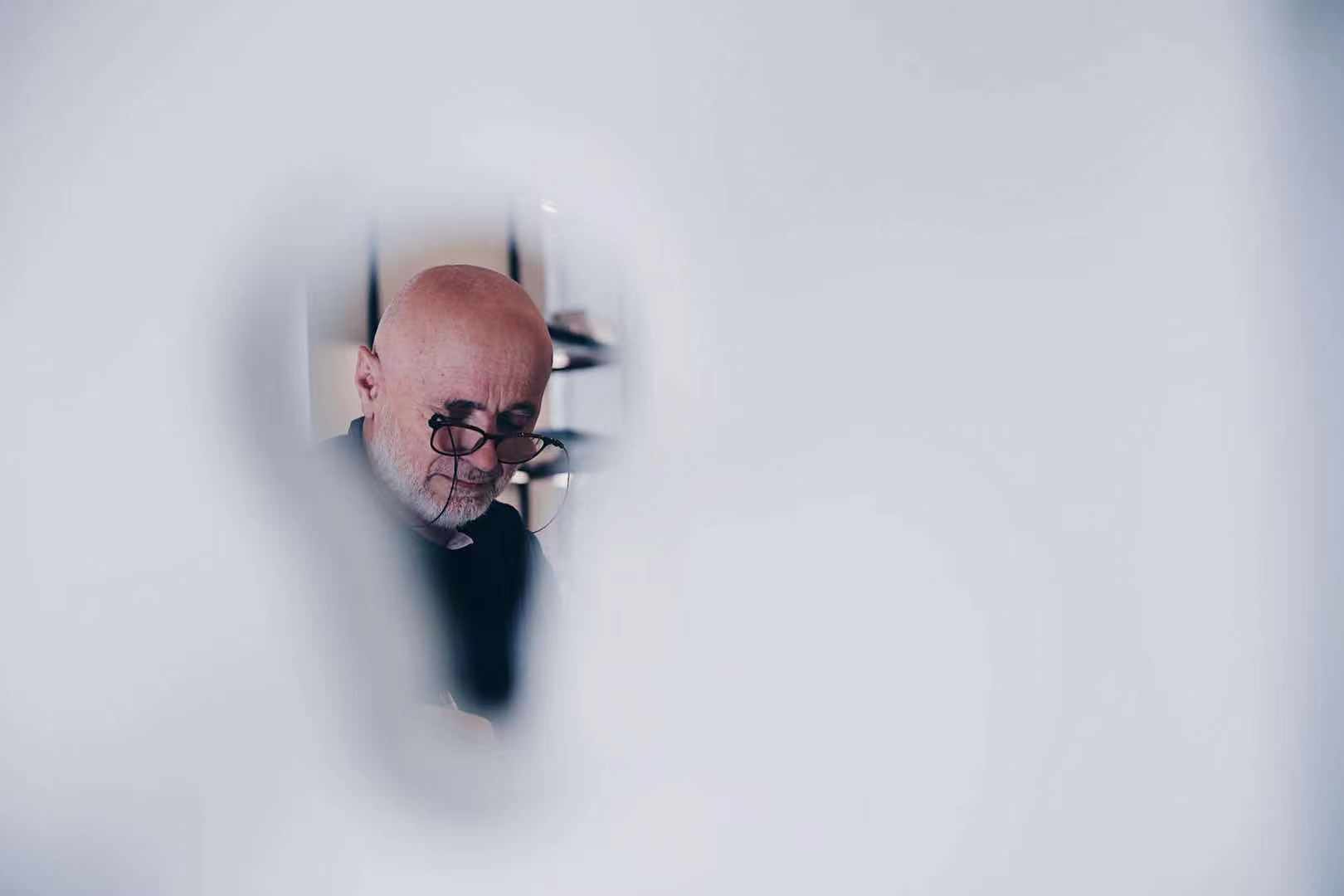
HR:Last question, there are so many designers in the world, what makes Italian designer so unique?
“Base on my own experience, there is no much difference, eventually we are all speaking similar language about lighting, Different designer has their own way to use the light, the style is different but the language we use is always the same.“
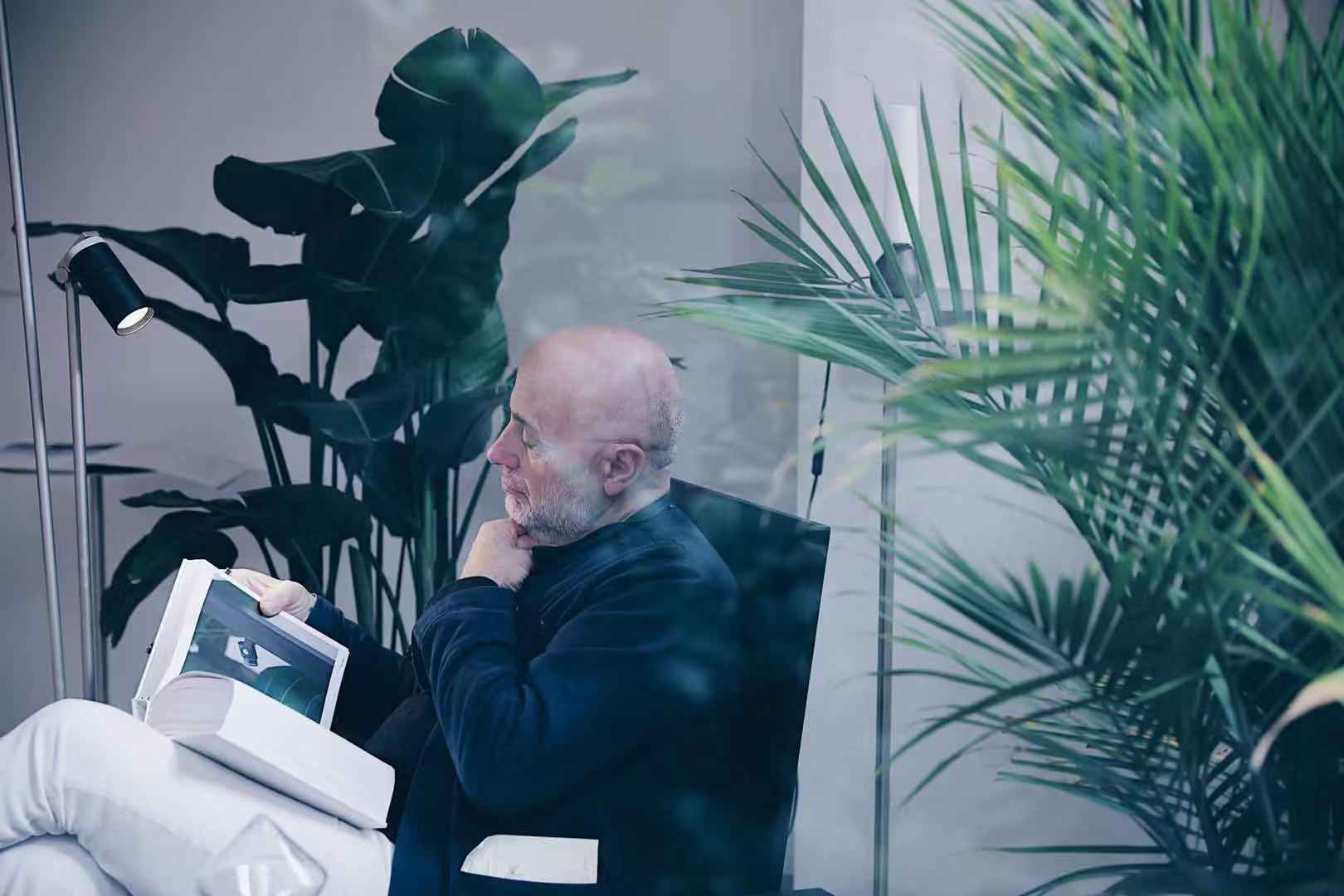
Photo by HEAVEN RAVEN
Special thanks/ Team Viabizzuno, Mario Nanni

